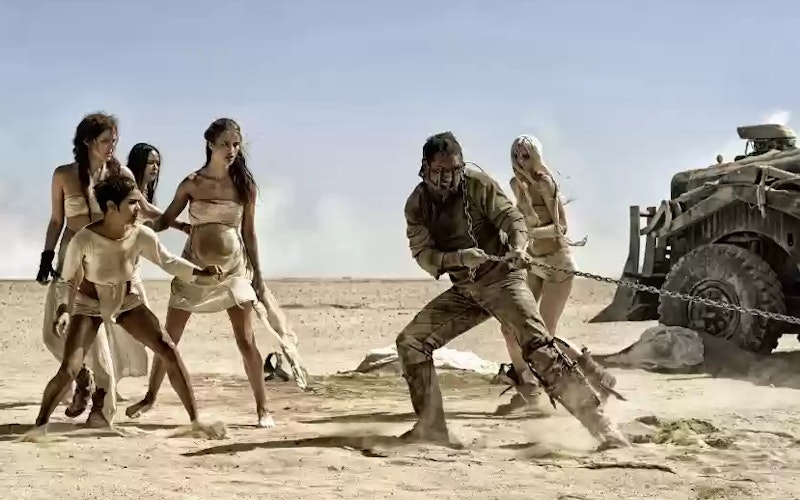
Movies
Holding Onto Hope in Mad Max: Fury Road
When things fall apart, as they have in Mad Max: Fury Road, it can be telling to watch how society rebuilds itself. In fact, at least in the movies, few things so starkly reveal the fallen nature of humanity and its structures than a dose of genre apocalypse.
A resuscitation of the Mel Gibson franchise of the 1980s, Fury Road takes place in a post-apocalyptic desert where gasoline and water are in excruciatingly short supply. What’s left is a landscape of barren roads, on which it’s either kill or be killed. Out of this chaos has risen a god-like leader named Immortan Joe (Hugh Keays-Byrne), who rules over the worshipful rabble from atop a rocky plateau. Having engineered a way to pump water to the top, where he lives amidst green crops, Immortan Joe keeps the thirsty commoners below in control by intermittently releasing jets of life-giving water. They worship him, in a sense, as a rain god.
The mixture of political power and religious myth is purposeful, as Alissa Wilkinson notes in a piece she wrote for The Washington Post: “The imagery here is all deeply religious and elemental - most obviously the Citadel and the surrounding landscape itself, resembling most of Dante’s Inferno circles collapsed into one fiery, dry, nightmarish hell that swings between great excess and great poverty. Sufferers are taunted by just enough water to make them feel its absence. Some prisoners are kept as human blood bags and milk producers.”
So far, so nihilistic. In seeking to order the world, Immortan Joe does not lavish gifts or share abundance – as God did when He corralled formlessness into the Garden of Eden. No, this is a civilization built on fear, greed and exploitation, in which human bodies are rendered as commodities. (Immortan Joe also has a harem of young women who serve as “breeders.”) In the movie’s opening voiceover we hear, “When the world fell, each of us was broken in our own way.” Fury Road is a vision of humanity shattered.
Few things so starkly reveal the fallen nature of humanity and its structures than a dose of genre apocalypse.
Yet the movie also offers a glimmer of hope. This doesn’t come in the form of the titular hero Max, now played by Tom Hardy. In fact, at the start of the film Max finds himself in a hopeless state. Having been captured on the road by a band of Immortan Joe’s acolytes, Max is now imprisoned as one of those blood bags, linked by chain and tube to an ailing foot soldier. When a rogue tanker driver tries to help Immortan Joe’s wives escape by smuggling them in a truck, Max gets literally dragged along in the ensuing chase to recapture them.
That tanker driver – named Imperator Furiosa and played by Charlize Theron – is the movie’s figure of promise, albeit a flickering one. As her truck races across the blighted horizon, no refuge in sight and countless, maniacally feral men in pursuit, it feels as if she’s only delaying the inevitable. Even Max, who manages to escape and somewhat reluctantly joins her cause, warns her, “Hope is a mistake.” In the aftermath of the apocalypse, he’s chosen to rebuild by going Darwinian – serving nothing more than the pure instinct to survive. Furiosa holds a belief in something better, in a society built on community, gentleness and sacrifice – qualities that are all exhibited in the small interactions among the motley crew who are joined together in desperate flight.
I won’t reveal whether Furiosa finds such a place or if her optimism proves unwarranted. I will say that in a larger sense, far beyond its immediate narrative, Mad Max: Fury Road champions a vision of humanity that’s ferociously just. This is a film in which caring for others takes precedence, no matter what the cost. It’s a film that yearns for structures of cruelty and fear to crumble. And it’s a film with hope for a world that is painfully, clearly not this one, but rather is yet to come.
Topics: Movies